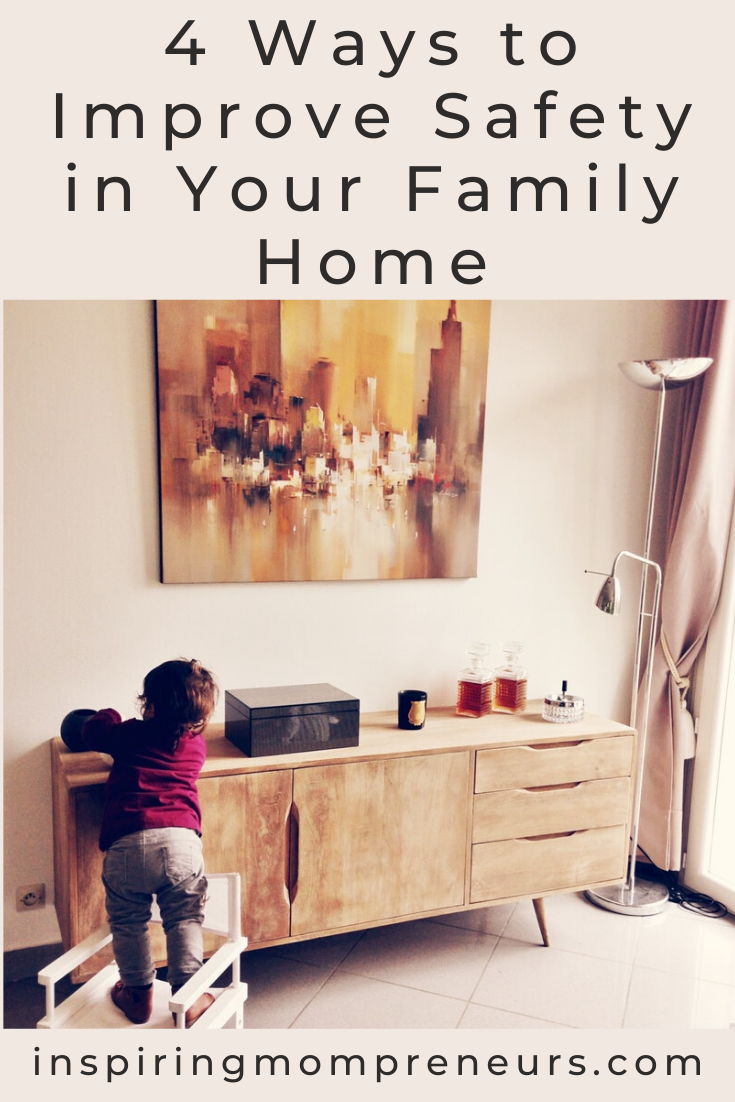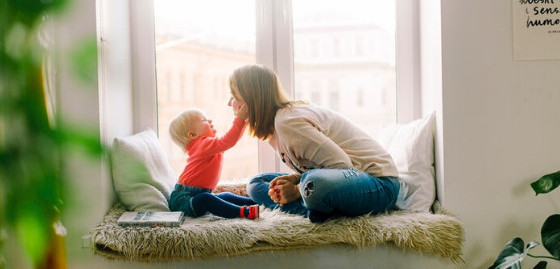Contributed by Lana Hawkins
There’s no higher priority than ensuring your home is a safe environment and your family is protected. And there are plenty of different safety measures you can implement in your home and features you can modify that will make a huge difference in improving the overall safety.
Here are several ideas to help you get started.
 1. Safety Outside the Home
1. Safety Outside the Home
Your safety measures can start outside your home where you can make a few adjustments to make sure everyone is protected when spending time outdoors.
Firstly, keep your garden or backyard fenced off so it doesn’t become an easy target for potential intruders. It also helps keep your small children or pets safe by not allowing them to wander off.
Another easy and very useful step is installing outdoor lighting. Sensor-operated outdoor lighting that detects motion acts as a deterrent for potential intruders and helps all family members when they arrive home late in the evening by illuminating the area around the house. It’s important to inspect the lights regularly to ensure they’re fully functional and replace them when they’re out.
2. Preventing Gun Injuries
Lots of homeowners keep firearms in the house for additional protection acting on their constitutional right, but if that’s the case, additional measures have to be taken to limit access to weapons and keep the family members safe from gun injuries.
The best method of protection from accidental gun injuries is by removing the weapons from the house as most injuries happen when curious children stumble upon a loaded and unlocked firearm.
If you insist on keeping the gun in the house, it’s imperative you keep it properly stored and locked in the best gun safe you can afford. Guns need to be first unloaded and then locked in a safe with ammunition kept in a separate locked cabinet and both keys put away in a place inaccessible to children.
Many people make the mistake of believing that simply hiding the weapon is sufficient, but research proves them wrong – 3 out of 4 kids younger than 14 know where the gun is kept and kids as young as three are strong enough to fire a gun. Therefore, no age is too young to assume to leave a gun out of a safe place.
3. Childproofing Tips
According to statistics, most incidents and injuries happen in the house so parents need to be especially careful to childproof their homes.
Particular attention should be given to any sources of heat or flame such as the fireplace or BBQ grill, wet places such as the bathroom, kitchen, hot tubs and swimming pools, places where toxic substances can be found like under the kitchen sink, garage, garden shed, medicine cabinet, and places where falls could happen such as stairs, high windows and slippery floors.
Additional precautions are making sure any button batteries are kept out of children’s reach as well as sharp objects and small items that are a choking hazard.
Outlets should be covered, safety latches installed on cabinets and drawers as well as windows and doors and, corners and edges covered with bumpers to prevent injuries.
4. Indoor Safety Measures
General indoor safety measures are just as important in a home as childproofing since they ensure the safety of the entire household.
The first crucial element is the smoke alarm which can ultimately save your family’s life by alerting you about fire danger and giving everyone enough time to exit safely. It’s essential you have heat alarms fitted in your garage and kitchen, optical ones in the living room, hallways and bedrooms and ionisation smoke alarms in your home’s landing areas. Also, they need to be checked regularly.
Another precaution is securing all the points of entry and exit such as the front and back door which can prevent small children from wandering off, as well as windows by which everyone is protected from falling out. Locks, bolts and guards are quite inexpensive and can be found in local DIY stores and their installation is typically 5 minutes long.
Just bear in mind that locks need to be strong enough to keep the door or window closed or blocked but easily operated so they can be opened quickly in case of fire.
In general, we regard our homes as a safe haven but there are always risks. Hopefully, these tips will help you improve your home’s safety and keep your family protected.
 About the Author:
About the Author:
Lana Hawkins is a Stay-at-Home Mom by day and Author by night. She’s passionate about interior design, traveling and green living.



